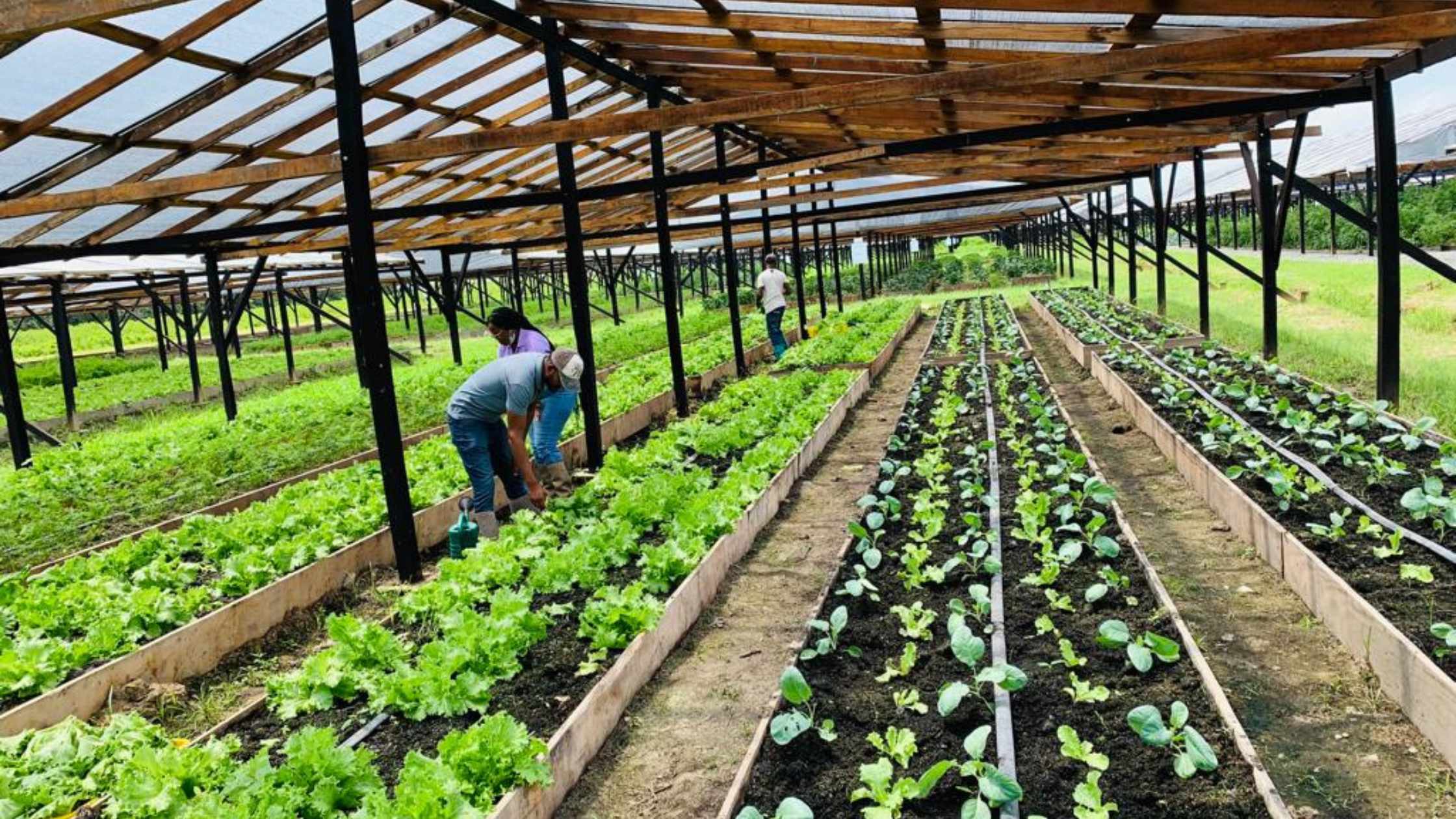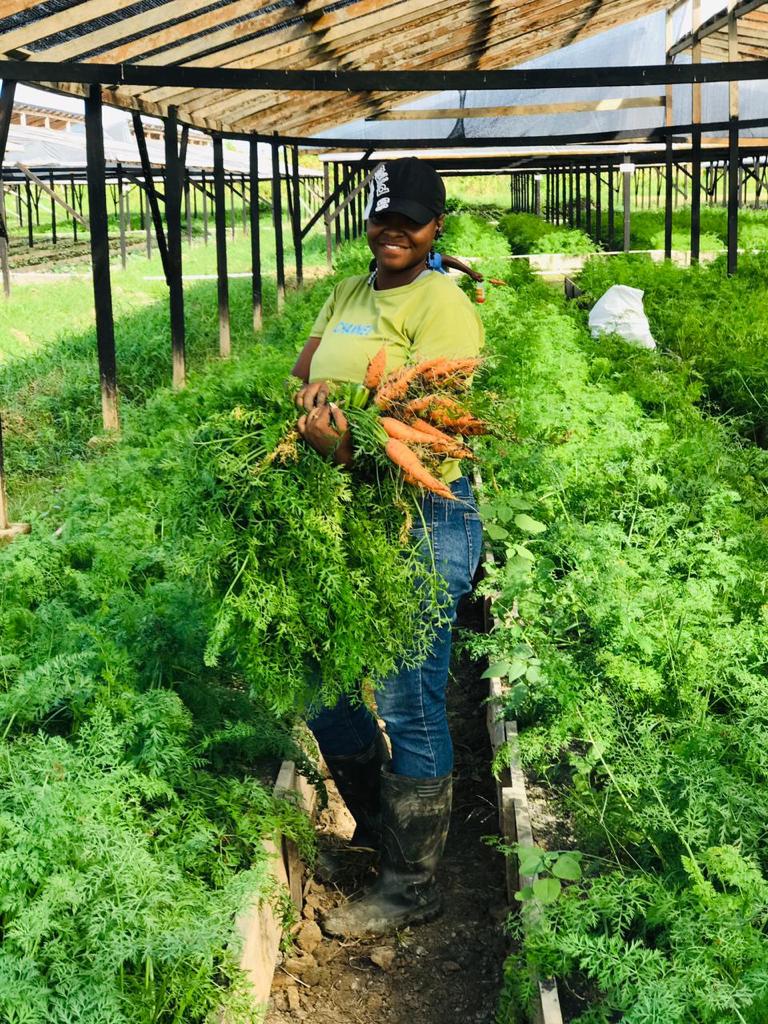
12 Jan A Youth-led Model for Change: One Guyana Agriculture Inc. and the Agriculture and Innovation Entrepreneurship Programme (AIEP)
A letter from three young agriculture graduates to their president in Guyana may have been the catalyst for the first-ever, youth-led, government-capitalised agriculture company in the country, One Guyana Agriculture Inc.
The company is facilitating the Agriculture and Innovation Entrepreneurship Programme (AIEP) launched in January 2022 by President Dr. Mohammed Irfaan Ali. The AIEP aims to increase youth agribusiness ownership, drive up domestic food production and reduce food imports.
Its top priority is producing high-value, non-native crops like broccoli, cauliflower and carrots year-round. Together they have accounted for a large portion of Guyana’s import bill with a total import value of GYD 1.962 billion in 2019 which rose to $2.626 billion in 2021. [The Guyana Standard]. Tomatoes, kale and bell peppers are also grown.
The AIEP trains University of Guyana graduates and other youth in a climate-smart agriculture method using shade houses. These structures filter the intensity of sunlight and protect crops from adverse rainfall. In addition, participants are trained in agribusiness.
As Guyana plays its lead role in CARICOM’s target to shave food imports by 25 per cent by 2023, One Guyana Inc. is a potential model for other member countries to emulate. But it’s not just because of the alternative farming techniques but perhaps more so because the company is run by young people. That takes us back to that letter to the President.
Letter to the President
Teesha Mangra-Singh, a 2020 agriculture studies graduate of the University of Guyana who is now the CEO of One Guyana Agriculture Inc., recollects how she and two of her peers had difficulties finding employment after graduation.
The COVID-19 pandemic only exacerbated their plight, but she says it forced them to think of another way to contribute and to make an income from agriculture.
“A group of us wrote to him [President Ali] telling him that we’re agriculture students and we are interested, we are passionate, we want to get involved…”
To their surprise, he invited them for an interview and showed great enthusiasm as they conveyed their zeal for the industry. It seems there was already a potential project in train as she says he inquired if they were interested in climate-smart technologies.
“I said yes”, she notes, “ and I said maybe if we have more of us on board, we can make a bigger impact.” She continues, “Three of us approached [the President] at first and that turned into 50 and we were able to launch [the AIEP] the following week.”

Youth Agri-entrepreneurs and intrapreneurs
Mangra-Singh now leads a team of young executives who, with technical assistance from the National Agricultural Research and Extension Institute (NAREI), oversee the AIEP. Since the programme’s start 54 shade houses have been constructed at the original site in East Demerara.
In addition, 200 more shade houses have been constructed countrywide in schools and communities with youth-based groups and organisations as beneficiaries.
Participants make the potting soil formulated from byproducts of the country’s rice and sugar industries; build planter boxes and trellises; implement fertigation (fertiliser incorporation) through drip irrigation; plant the crops; monitor the environmental conditions with wind speed, sunlight and rainfall sensors; and harvest the crops. They are also responsible for packaging, marketing and sales.

Successes
The programme seems to be delivering on its objectives. So far over 200 young people have participated and according to Mangra-Singh, more than 75 percent of them are now agri-business owners.
In addition, she notes that the programme supplies many restaurants and hotels that would have been major importers of the produce now grown locally.
Furthermore, she recalls that before the programme, the market price of cauliflower was GYD 1600 per pound but plummeted to GYD 500 per pound with the introduction of their produce. This makes the commodities far more affordable for local consumers.
“Now we’re seeing the pattern with local consumers that they’re prioritising buying our products because of the freshness, because of the quality, because of the taste and just the burning desire to support the local economy…We don’t have enough to supply right now, that’s why we have to look into future expansion,” she says.
Region-wide adoption?
Guyana is sharing its knowledge with CARICOM neighbours given the successes seen so far. The country has already shipped shade houses to Barbados and trained a group of that island’s young people in shade house development and management. A group from Trinidad and Tobago is also expected to benefit from similar training.
Mangra-Singh believes that One Guyana Agriculture Inc. and the AIEP is an ambitious undertaking, one that “is challenging the traditional notion of leadership and demonstrating that young people are capable of driving change, making strategic decisions and shaping the future.” It’s a model she wants to see adopted in the region. So do we.

